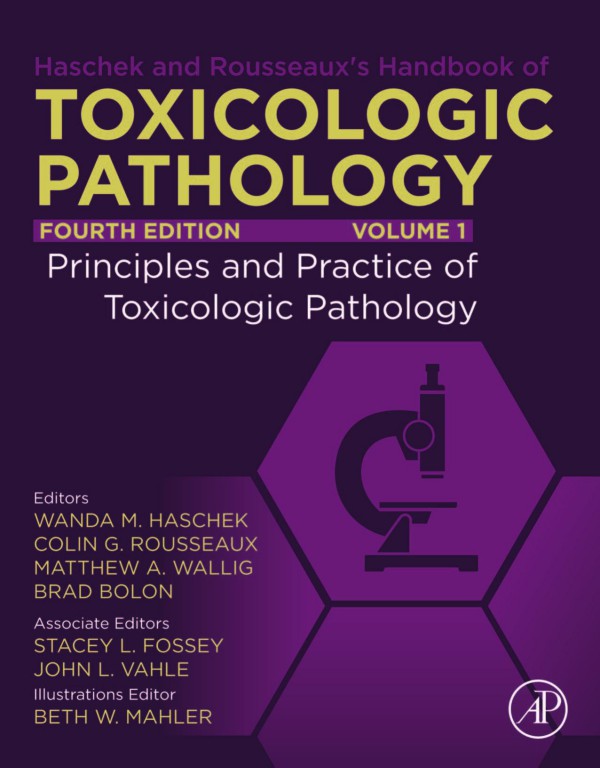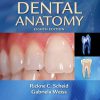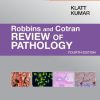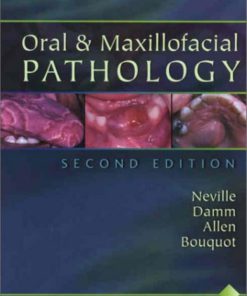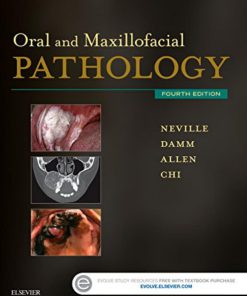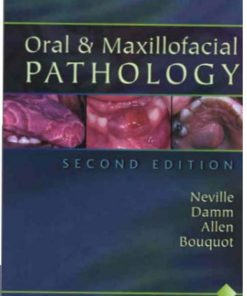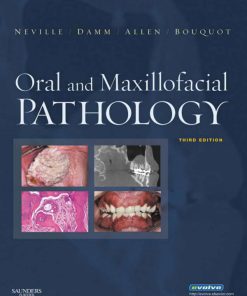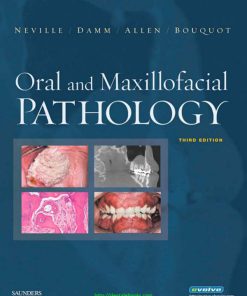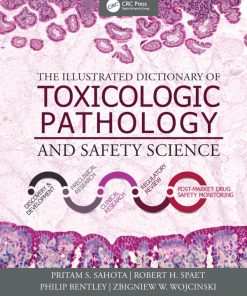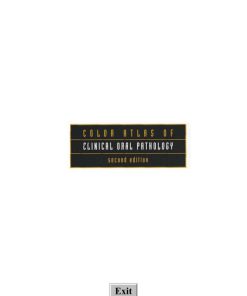Haschek and Rousseaux’s Handbook of Toxicologic Pathology 4th Edition by Brad Bolon,Matthew Wallig,Wanda Haschek,Colin Rousseaux 9780128218297 0128218290
$50.00 Original price was: $50.00.$25.00Current price is: $25.00.
Authors:Wanda M. Haschek (editor), Colin G. Rousseaux (editor), Matthew A. Wallig (editor), Brad Bolon (editor) , Series:Pathology [318] , Author sort:Wanda M. Haschek (editor), Colin G. Rousseaux (editor), Matthew A. Wallig (editor), Brad Bolon (editor) , Languages:Languages:eng , Published:Published:Oct 2021 , Publisher:Academic Press
Haschek and Rousseaux’s Handbook of Toxicologic Pathology 4th Edition by Brad Bolon,Matthew Wallig,Wanda Haschek,Colin Rousseaux – Ebook PDF Instant Download/Delivery.9780128218297,0128218290
Full download Haschek and Rousseaux’s Handbook of Toxicologic Pathology 4th Edition after payment
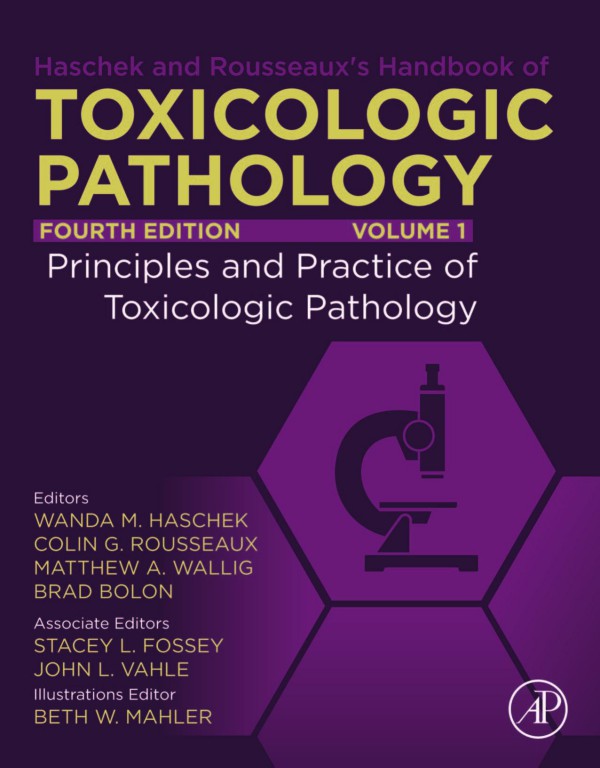
Product details:
ISBN 10: 0128218290
ISBN 13: 9780128218297
Author:Brad Bolon,Matthew Wallig,Wanda Haschek,Colin Rousseaux
Haschek and Rousseaux’s Handbook of Toxicologic Pathology, recognized by many as the most authoritative single source of information in the field of toxicologic pathology, has been extensively updated to continue its comprehensive and timely coverage. The fourth edition has been expanded to four separate volumes due to an explosion of information in this field requiring new and updated chapters.
Completely revised with a number of new chapters, Volume 1, “Principles and the Practice of Toxicologic Pathology,” covers the practice of toxicologic pathology in three parts: Principles of Toxicologic Pathology, Methods in Toxicologic Pathology, and the Practice of Toxicologic Pathology. Other volumes in this work round out the depth and breadth of coverage.Volume 2 encompasses “Toxicologic Pathology in Safety Assessment” and “Environmental Toxicologic Pathology”. These two sections cover the application of toxicologic pathology in developing specific product classes, principles of data interpretation for safety assessment, and toxicologic pathology of major classes of environmental toxicants. Volumes 3 and 4 provide deep and broad treatment of “Target Organ Toxicity”, emphasizing the comparative and correlative aspects of normal biology and toxicant-induced dysfunction, principal methods for toxicologic pathology evaluation, and major mechanisms of toxicity. These volumes comprise the most authoritative reference on toxicologic pathology for pathologists, toxicologists, research scientists, and regulators studying and making decisions on drugs, biologics, medical devices, and other chemicals, including agrochemicals and environmental contaminants. Each volume is being published separately.
- Provides new chapters on digital pathology, juvenile pathology, in vitro/in vivo correlation, big data technologies and in-depth discussion of timely topics in the area of toxicologic pathology
- Offers high-quality and trusted content in a multi-contributed work written by leading international authorities in all areas of toxicologic pathology
- Features hundreds of full-color images in both the print and electronic versions of the book to highlight difficult concepts with clear illustrations
Haschek and Rousseaux’s Handbook of Toxicologic Pathology 4th Table of contents:
Chapter 1. Toxicologic Pathology: An Introduction
1. An Overview of Toxicologic Pathology
2. What Is Toxicologic Pathology?
3. The Basis of Toxicologic Pathology
4. Challenges in Toxicologic Pathology
5. Training and Certification in Toxicologic Pathology
6. The “Practitioner” of Toxicologic Pathology
7. Summary
Part 1. Principles of Toxicologic Pathology
Chapter 2. Biochemical and Molecular Basis of Toxicity
1. Introduction
2. General Principles of Xenobiotic Disposition
3. Interactions of Toxicants with Cellular and Molecular Targets
4. Idiosyncratic Mechanisms of Toxicity
5. Protective Mechanisms, Repair Mechanisms, and Adaptation or Failure
6. Summary and Conclusions
Chapter 3. ADME Principles in Small Molecule Drug Discovery and Development: An Industrial Perspective
1. Introduction
2. General ADME Principles
3. Discovery Overview
4. Absorption, Bioavailability, and PK/TK Studies
5. Distribution
6. Metabolism
7. Excretion
8. Physiologically Based PK modeling
9. Development
10. Mass Balance Studies
11. Tissue Distribution Studies
12. Drug Metabolism Studies in Development
13. Excretion Studies
14. Specialized Excretion Studies
15. General Timing of Development ADME Studies
16. Conclusions
Chapter 4. Biotherapeutics ADME and PK/PD Principles
1. Introduction
2. Pharmacokinetics of Biotherapeutics
3. Pharmacodynamics of Biotherapeutics
4. PK–PD Modeling and Interspecies Scaling
5. Summary
Chapter 5. Principles of Pharmacodynamics and Toxicodynamics
1. Introduction: Definition of Pharmacodynamics and Toxicodynamics
2. Mechanism of Drug Action and Adverse Drug Reaction
3. Types of Adverse Drug Reaction: Intrinsic (Type A) Versus Idiosyncratic (Type B)
4. Types of Xenobiotic–Target Interaction
5. Exposure-Dependent Response
6. Response Following Chronic Dosing
7. Quantitative Modeling for Pharmacokinetic/Pharmacodynamic and Toxicodynamic Data Analysis
Chapter 6. Morphologic Manifestations of Toxic Cell Injury
1. Introduction
2. Adaptation
3. Irreversible versus Reversible Cell Injury
4. Irreversible Cell Injury
5. Conclusion
Chapter 7. The Role of Pathology in Evaluation of Reproductive, Developmental, and Juvenile Toxicity
1. Introduction
2. Reproductive Toxicity Assessment
3. Pregnancy and Developmental Toxicity
4. Juvenile Toxicity Assessment
5. Conclusions
Abbreviations
Chapter 8. Carcinogenesis: Mechanisms and Evaluation
1. Introduction
2. Mechanisms of Chemically Induced Carcinogenesis
3. Identification of Carcinogens—Testing Programs and Guidelines
4. Evolving and New Technologies
5. Conclusions
Part 2. Methods in Toxicologic Pathology
Chapter 9. Basic Approaches in Anatomic Toxicologic Pathology
1. Introduction
2. General Considerations in Study Protocol Development
3. In-Life Evaluations
4. Necropsy
5. Fixation and Histologic Procedures
6. Specialized Histologic Techniques
7. Histopathologic Evaluation
8. Artifacts versus Lesions
9. Diagnostic Challenges in Anatomic Toxicologic Pathology
10. Conclusions
Chapter 10. Clinical Pathology in Nonclinical Toxicity Testing
1. Introduction
2. Clinical Pathology Parameters Commonly Included in Protocols for General Toxicity Studies
3. Nonstandard Biomarkers
4. Conclusions
Chapter 11. Special Techniques in Toxicologic Pathology
1. Introduction
2. Immunohistochemistry
3. Enzyme Histochemistry
4. In Situ Hybridization
5. Flow Cytometry
6. Laser Capture Microdissection
7. Confocal Microscopy
8. Electron Microscopy
9. Stereology
10. Digital Pathology
11. Conclusions
Glossary
Chapter 12. Digital Pathology and Tissue Image Analysis
1. Introduction
2. Whole-Slide Imaging
3. Tissue Image Analysis
4. Regulatory Considerations for Digital Pathology Evaluation
5. Related Topics
6. Conclusion
Chapter 13. In Vivo Small Animal Imaging: A Comparison to Gross and Histopathologic Observations in Animal Models
1. Introduction
2. Magnetic Resonance Imaging and Magnetic Resonance Microscopy
3. Computed Tomography
4. Radionuclide-based Imaging: PET and SPECT
5. Optical Imaging
6. Ultrasound
7. Translational Application, Safety Assessment, and Drug Screening with In Vivo or Ex Vivo Imaging
Abbreviations for Imaging Modalities
Chapter 14. Biomarkers: Discovery, Qualification, and Application
1. Introduction
2. Categories of Biomarkers
3. Strategies for Discovery of Biomarkers
4. Methods for Biomarker Measurement and Quantitation
5. Qualification of Biomarkers: Major Considerations
Chapter 15. Toxicogenomics: A Primer for Toxicologic Pathologists
1. Introduction
2. Basics of Toxicogenomics
3. Overview of Toxicogenomic Technologies
4. Key Considerations for Conducting Toxicogenomic Studies
5. Goals and Applications of Toxicogenomic Studies
6. Sample Considerations
7. Applications of Toxicogenomics
8. Regulatory Considerations
9. Conclusions
Glossary
Chapter 16. Experimental Design and Statistical Analysis for Toxicologic Pathologists
1. Introduction
2. Considerations Made Before Designing the Experiment
3. Experimental Design
4. Designs Commonly Used in Toxicologic Pathology
5. Functions of Statistical Analyses
6. Prerequisites to Statistical Analysis
7. Statistical Methods
8. Interpretation of Results
9. Data Analysis Applications in Toxicologic Pathology
10. Assumptions of Statistical Tests
11. Summary and Conclusions
Glossary
Part 3. Animal and Alternative Models in Toxicologic Research
Chapter 17. Animal Models in Toxicologic Research: Rodents
1. Introduction
2. Rodent Model Selection
3. Issues in Extrapolation of Rodent Data for Human Risk Assessment
4. Basic Biological Characteristics of Common Rodent Stocks and Strains
5. Common Pathologic Findings in Rodents
6. Conclusion
Chapter 18. Animal Models in Toxicologic Research: Rabbit
1. Introduction
2. Model Selection
3. Basic Biological Characteristics and Common Breeds
4. Regulatory Aspects and Examples of Use of Rabbits in Biomedical Research
5. Pharmacokinetic and Toxicity Studies
6. Major Disease and Functional Models (Other than Safety)
7. Spontaneous Findings in the Experimental NZW Rabbit
Chapter 19. Animal Models in Toxicologic Research: Dog
1. Introduction
2. History and Derivation of Beagles
3. Use of Dogs in Biomedical Research
4. Predictivity of Dog Toxicity Data to Humans
5. Comparative Toxicology of the Dog
6. Spontaneous Background Pathology in the Beagle (Refer to Woicke et al., 2021)
7. Use of the Dog as a Model of Human Diseases
8. Regulatory Considerations for Toxicity Studies
9. Ethics of Use of the Dog as a Laboratory Animal Species
10. Summary
Chapter 20. Animal Models in Toxicologic Research: Pig
1. Introduction
2. Genetics of Pigs and Background for Their Use in Research
3. Use of Pigs in Toxicological Studies
4. Pigs as Organ Source for Xenotransplantation
5. Spontaneous Background Pathology in Swine
6. Use of the Pig as a Model System for Medical Devices and of Human Diseases
7. Regulatory Aspects
8. Ethics and Animal Welfare
9. Summary
Chapter 21. Animal Models in Toxicologic Research: Nonhuman Primate
1. Introduction
2. History and Biological Characteristics of Nonhuman Primates
3. Selection of Nonhuman Primates for Toxicologic Research and Study Design Considerations
4. Predictivity of Nonhuman Primate Toxicity Data to Humans
5. Nonhuman Primate Models in Biomedical Research (see also (Abee, Mansfield, Tardif, & Morris, 2012)
6. Background Findings in Nonhuman Primates and Use of Historical Control Data
7. Conclusion
Chapter 22. Animal Models in Toxicologic Research: Nonmammalian
1. Introduction
2. Nonmammalian Animal Taxa
3. Utilization of Nonmammalian Animals
4. Study Design Considerations
5. Data Extrapolation
6. Conclusions
Chapter 23. Genetically Engineered Animal Models in Toxicologic Research
1. Fundamentals of Genetically Engineered Animal Models
2. Analysis of Genetically Engineered Animal Models
3. Genetically Modified Models for Hazard Identification and Safety Assessment
4. Limitations in Using Genetically Modified Animals for Hazard Identification and Safety Assessment
5. Special Considerations in Safety Assessment of Products Derived from Genetically Engineered Animals
6. Summary
Glossary
Chapter 24. Alternative Models in Biomedical Research: In Silico, In Vitro, Ex Vivo, and Nontraditional In Vivo Approaches
1. Introduction
2. Nontraditional Models in Toxicity Research
3. In Vitro and Ex Vivo Models
4. In Silico Models and Data Analytics
5. In Vivo Models Using Alternative Mammalian and Nonmammalian Species
6. Regulatory Perspective on Alternative Models
7. Conclusions and Perspectives
Part 4. Practice of Toxicologic Pathology
Chapter 25. Nomenclature and Diagnostic Resources in Anatomic Toxicologic Pathology
1. Introduction
2. The Need for Standardized Nomenclature
3. Components in Nomenclature
4. Challenges in Standardizing Nomenclature
5. Recommended Practices
6. Harmonization of Nomenclature
7. Conclusions
Chapter 26. Pathology Peer Review
1. Introduction
2. Peer Review Timing and Pathology Raw Data
3. Peer Review Process
4. National Toxicology Program Review Process
5. Regulatory Aspects of Pathology Peer Review
6. Use of Digital/Whole-Slide Images in Pathology Peer Review
7. Conclusion
Chapter 27. Pathology and GLPs, Quality Control, and Quality Assurance
1. Introduction
2. Overview of Good Laboratory Practice Standards
3. GLP and Pathology Data
4. Clinical Pathology Assessment in the GLP Environment
5. Ultrastructural Assessment in the GLP Environment
6. Noninvasive Imaging Applications in the GLP Environment
7. In the Spirit of GLP
8. GLP Criticism
9. Conclusions
Chapter 28. Practices to Optimize Generation, Interpretation, and Reporting of Pathology Data from Toxicity Studies
1. Introduction
2. Practices that Prevent or Mitigate the Introduction of Pathology-Related Issues During Study Design and Protocol Preparation
3. Practices that Prevent or Mitigate the Introduction of Pathology-Related Issues Arising During the In-Life Phase
4. Practices that Prevent or Mitigate Issues Arising from Pathology Assessment and Reporting
5. Conclusions
Glossary
Chapter 29. Issues in Laboratory Animal Science That Impact Toxicologic Pathology
1. Introduction
2. Trends in Global Research Animal Care and Use
3. Regulatory Issues
4. Euthanasia of Research Animals
5. Selection of Animal Models
6. Animal Health Considerations
7. Microbiome and Microbial Effects on Pathophysiology and Study Outcomes
8. Housing and Husbandry Issues
9. The Role of Diet in Toxicity Studies
10. 3R’s and In-Life Study Conduct for the Toxicologic Pathologist
11. Description of Animal Studies in Scientific Publications
12. Conclusion
People also search for Haschek and Rousseaux’s Handbook of Toxicologic Pathology 4th :
jean jacques rousseau discourse on inequality pdf
haschek and rousseaux’s handbook of toxicologic pathology
jean jacques rousseau a discourse on inequality
jean jacques rousseau discourse on the origin of inequality pdf
haschek and rousseaux’s handbook of toxicologic pathology (fourth edition)
You may also like…
eBook PDF
Color Atlas of Clinical and Oral Pathology 1st Edition by Brad Neville ISBN 081211311X 9780812113112

